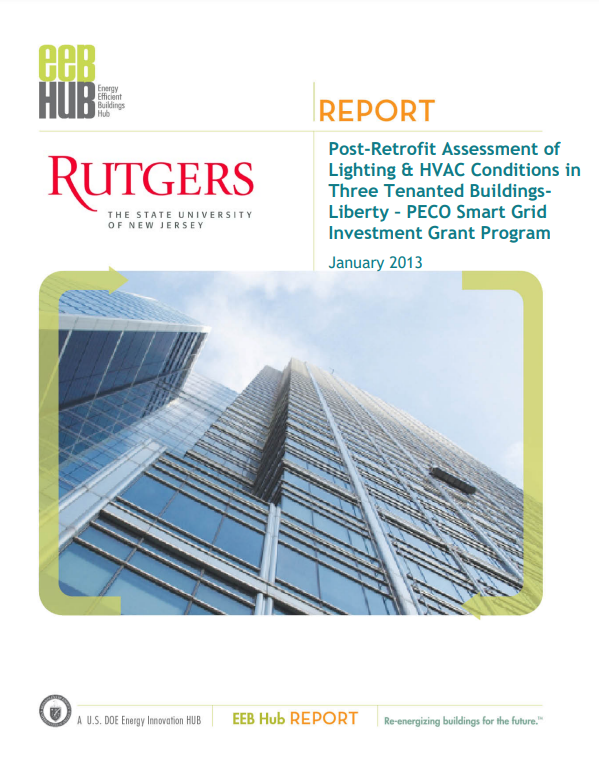The objectives of this post-occupancy evaluation (POE) of three commercial office buildings in the greater Philadelphia region were threefold:
- 1Enhance the understanding of the roles that occupant behavior plays in building energy
performance. - Test methodologies for evaluations of energy use and design strategies in office settings.
- Collect baseline and post retrofit behavioral and observational data regarding HVAC and lighting energy saving technologies as a basis for generating behavioral findings/hypotheses.
Post-occupancy evaluation (POE) is a systematic evaluation of building and systems data, observations, and building users’ opinions that highlight factors that can improve the functionality
and efficiency of the building as well as inform future design strategies. POEs employ both quantitative and qualitative methods to compare the performance of a site (most typically a building
and its users) to theoretically constructed or client-driven objectives. POEs may adopt research designs that are longitudinal (looking at the same site across time) or comparative/cross-sectional
(evaluating a site against others involved in the same project, or in existing databases) (Wener, Richard E., McCunn, Lindsay J., & Senick, Jennifer, in preparation).
The overall goal of this POE is to conduct research that supports building design and operating decisions that improve energy performance without sacrificing occupant satisfaction, health, safety or productivity. From the behavioral side, its main focus is on usability of building energy saving technologies. Modern facilities have complex and multi-faceted controls that need careful adjustment to provide user comfort while maintaining efficient use of energy. If the personsystem interface for these controls is difficult or obscure (e.g., Norman, 1988) they can be ignored or set incorrectly making users dissatisfied and unproductive, and forcing adaptive responses while at the same time wasting energy. Past studies suggest that usability may be critical in determining the success of innovations for energy related building technology (Blumstein, Krieg, Schipper, & York, 1980; Case, 1984; Wener, 1984; Volink, Meertens, & Midden, 2002). Research has also shown that giving occupants increased control over these systems as they affect their workspaces is critical to their satisfaction with the setting (Michelson, 1977; Weidemann, & Anderson, 1985; Francescato, Weidemann, & Anderson, 1989; Bonaiuto et al., 1999), and that lack of control can lead to decreased productivity (Cole & Steiger 1999; Heerwagen, 2000). When building occupants find systems to be unusable they may become unhappy (unsatisfied), lose time in trying to adjust the systems Post-Retrofit Assessment of Lighting & HVAC Conditions in Three Tenanted Buildings January 2013 (productivity loss) and take adaptive actions that while improving occupant comfort may interfere with building performance.
The sites addressed here hold additional interest because they are tenanted buildings; two are multi-tenanted and one houses only a single tenant. Tenanted buildings are particularly difficult settings with regards to energy management as they are commonly challenged by split incentives (master-metering), fragmented responsibilities, diffused information flows and tension between centralized and localized control of building energy systems, which may have implications for building usability. In multi-tenanted buildings, these challenges potentially are exaggerated.
